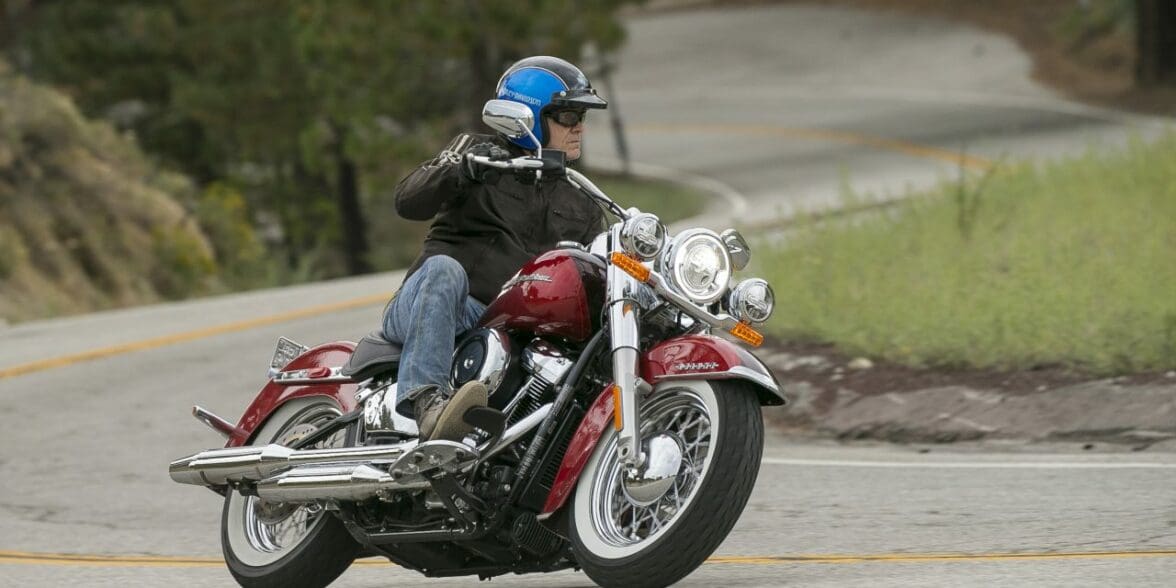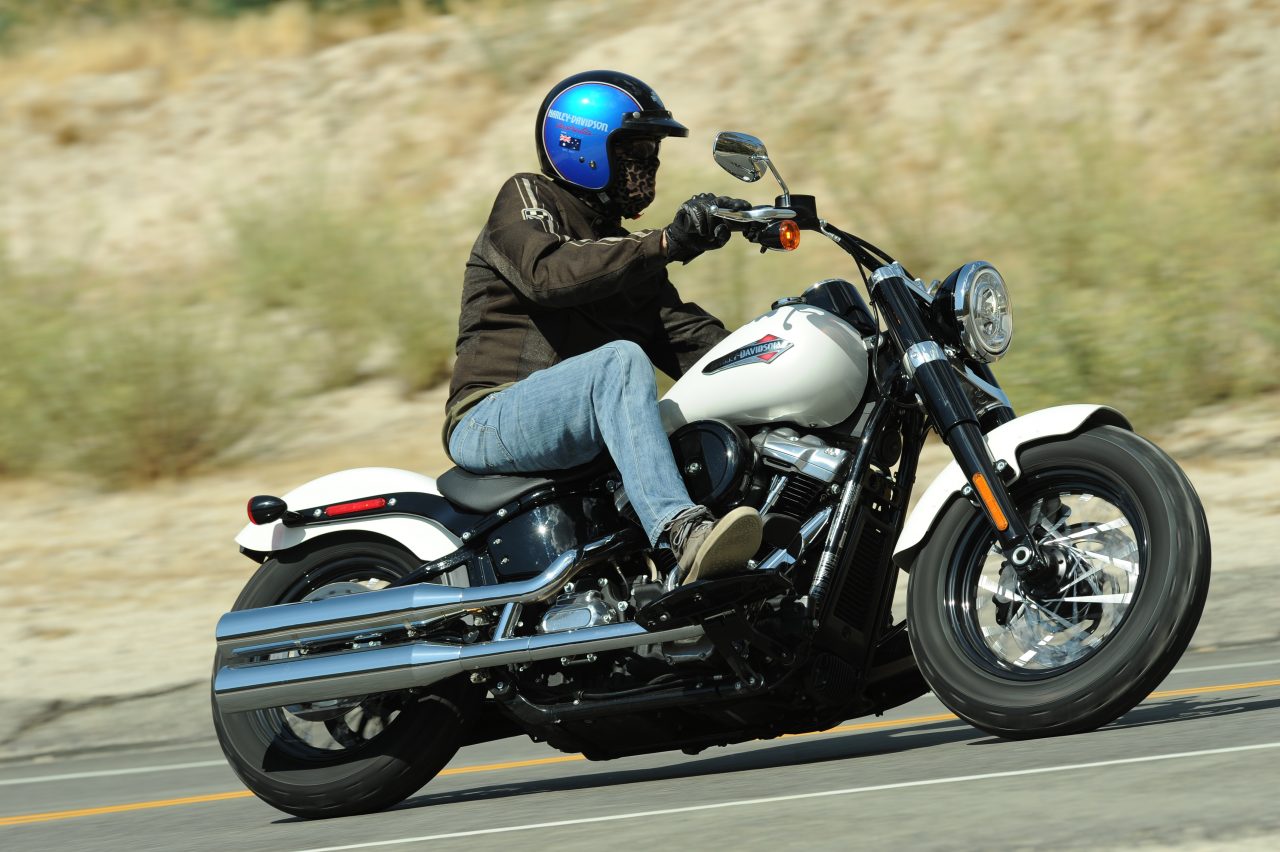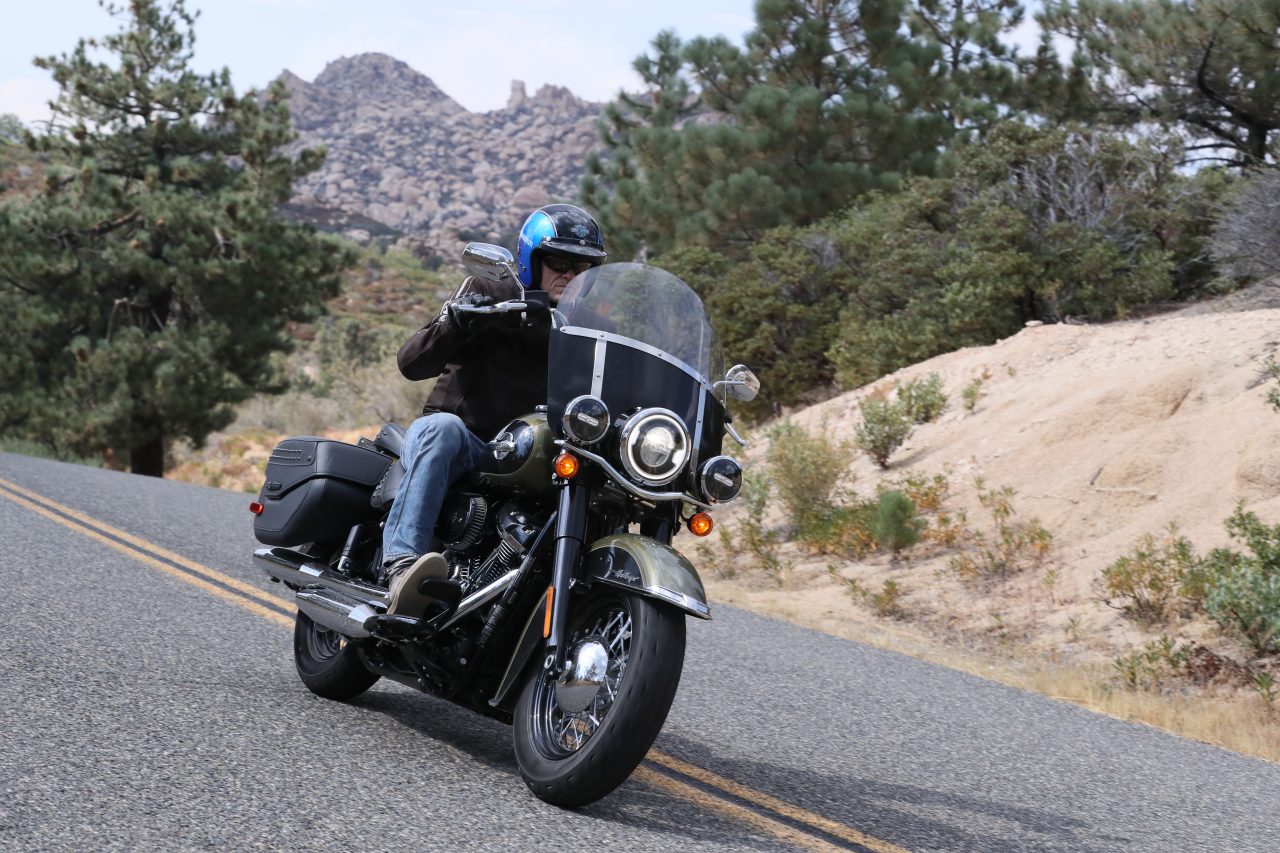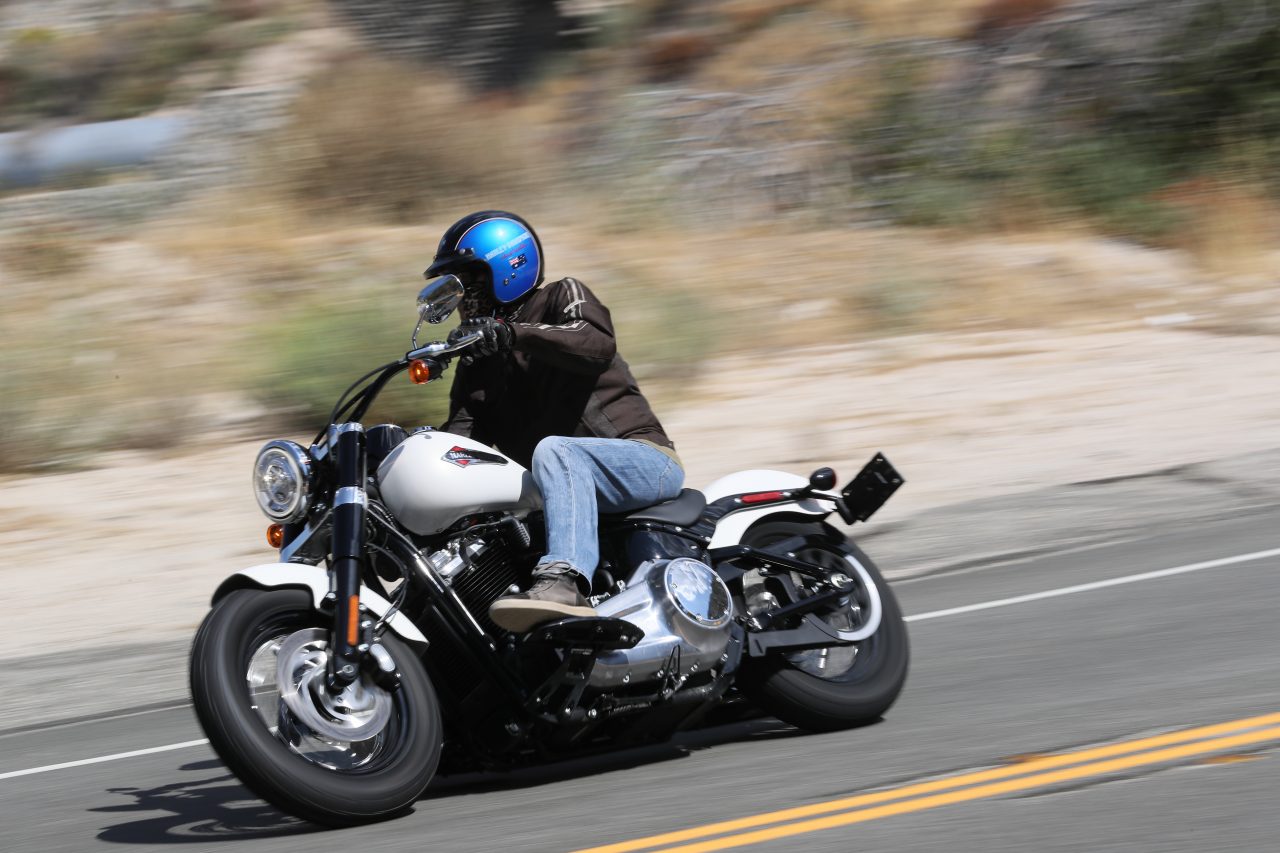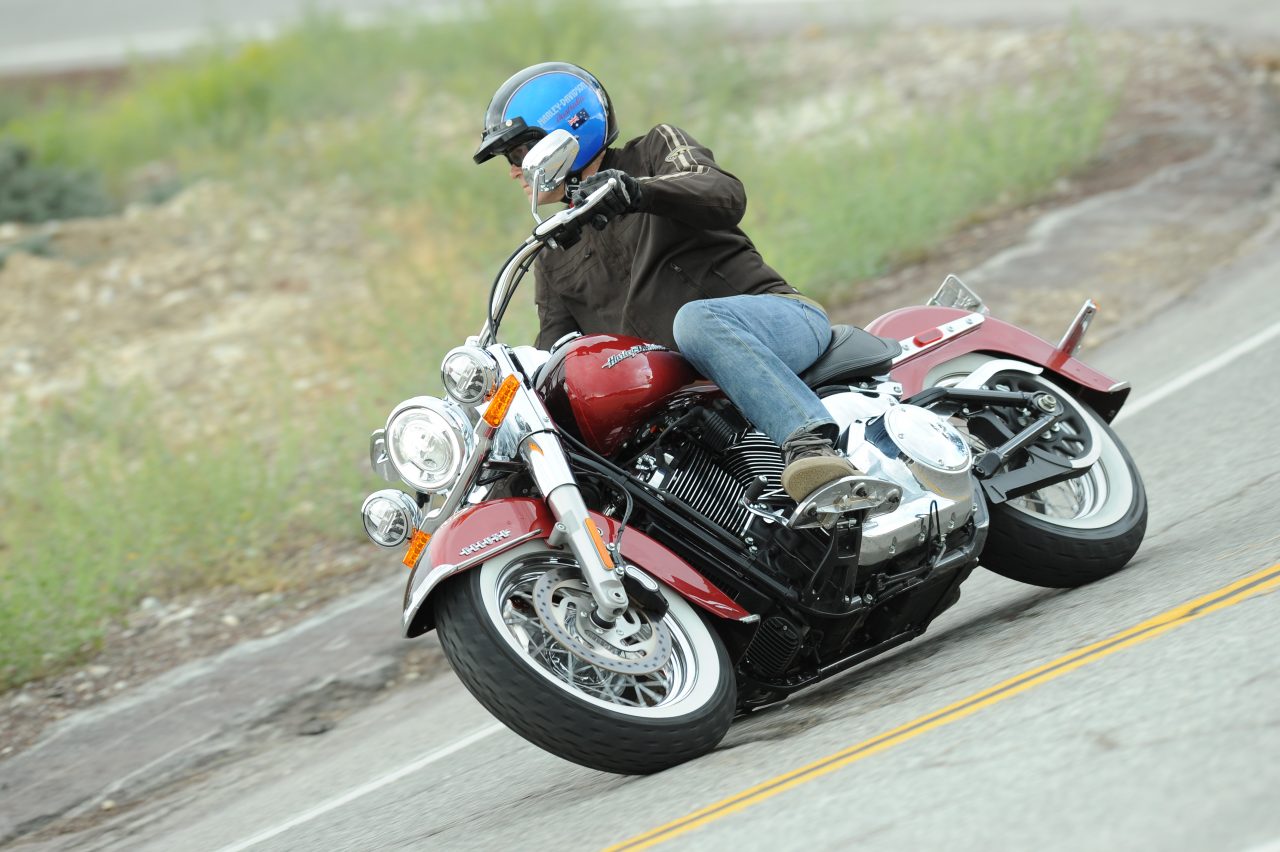Harley-Davidson’s biggest research and development program yet has revolutionised the 33-year-old Softail family converting classics into modern machines.
The three classic models in the line-up – Heritage Classic, Deluxe and Slim – receive a thoroughly modern cosmetic and performance update including LED headlights and even a USB charging port in the steering head.
Even the “chrome cowboy” Heritage Classic gets a dose of modern “dark custom” reality with weatherproof, lockable, leather-wrapped saddlebags.
The cowboy tassels are gone and the chromed studs have made way for smoked nickel. Gone also are the white-wall tyres.

We’re not sure what the Heritage classic fans will make of the bike’s more modern looks, but they certainly can’t complain about its improved performance.
Harley-Davidson Australia says the new models will arrive later this month.
Click here to read about all the new Softail models.
Handling improved
The classic Softails get much-improved suspension with dual-bending-valve forks and an improved rear shock.
The frame that dated back to 1984 has been replaced by an all-new modern frame with a 50% reduction in components and 20% fewer welds that makes it 20% lighter.
That equates to a 17kg weight reduction in the classic models.
It also means the frame is 34% stiffer.
Suspension and frame upgrades make these lighter and more nimble handlers with about one degree more static lean angle.
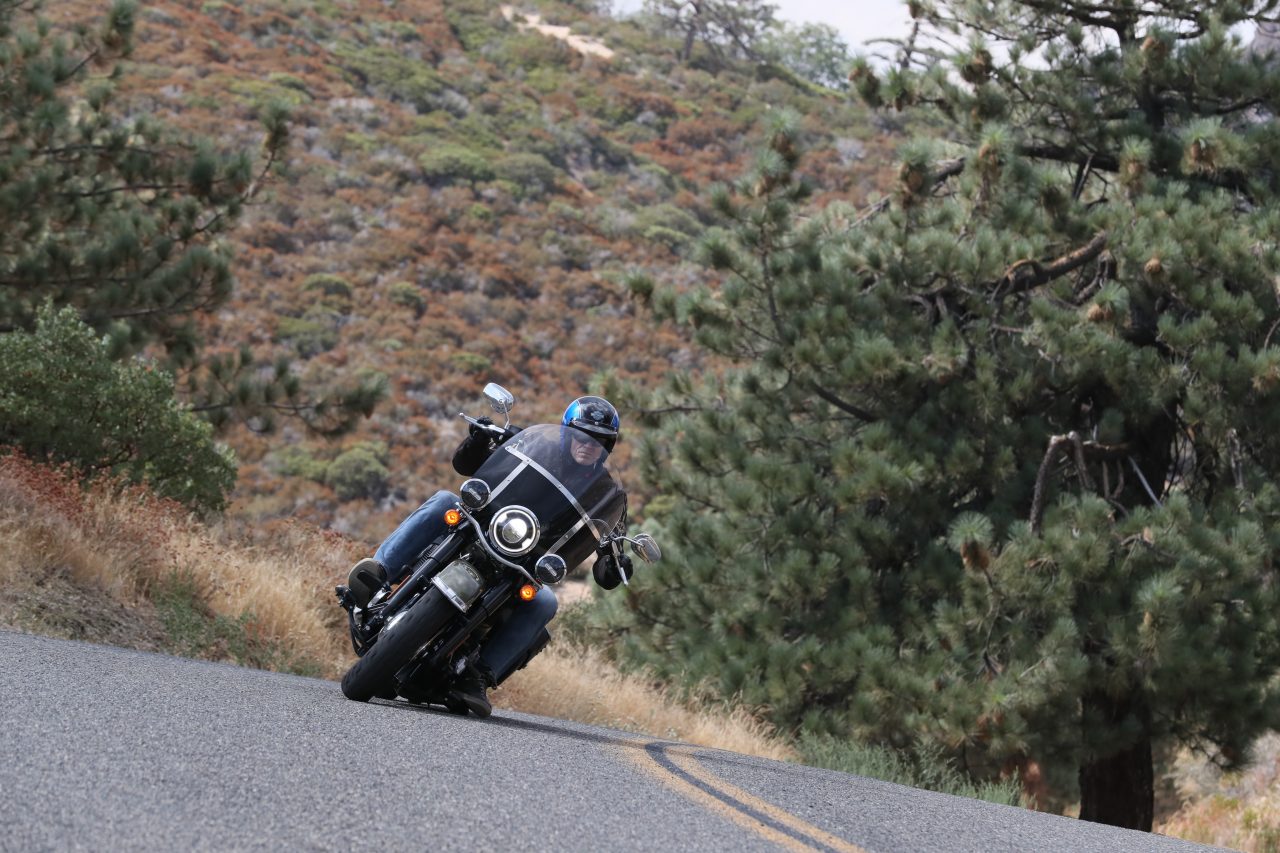
Cornering clearance has also been improved by tilting the transmission up to raise the primary cover and clutch pump, and squeezing the swingarm.
More importantly, the dynamic lean angle is improved even more as we found at the world launcch event in Los Angeles last week, carving up and down the twisting roads of the San Gabriel Mountains.
Engineering program manager Brad McIlwee says they still list the SAE standard angle lean angles, but pointed out that riders will experience a better dynamic “real world” lean angle.
“We didn’t design to a number, but to rider usage,” he says.
A lighter bike also improves braking performance and makes the bikes easier to lift off the side stand.
Making them feel even lighter is the lower centre of gravity thanks to moving the oil tank from under the seat to under the engine.
More power
Brad says the weight saving not only improves handling but also the power-to-weight ratio for improved acceleration and fuel economy.
They are now powered by the more-powerful Milwaukee Eight 107-cube engine from the Touring models.
However, it has been 100% balanced with a second balancer to hard-mount the engine to the frame, rather than the rubber-mounted Touring engines.
Harley doesn’t mention power, but torque in the Softail 107 is slightly down from the 152Nm at 3250rpm in the Touring models to 145Nm at 3000 revs, thanks to the extra balancing.
The Heritage Classic gets a choice of a 114-cube engine in standard and 115th Anniversary trim. Click here to read about all the 115th Anniversary models.
The 114-cube engine in the Softail has 155Nm of torque at 3000 revs which is down from 168Nm at 3250rpm in the CVO Touring models.
However, Brad says that compared with the previous Twin Cam engines, the 107 bikes would be three bike lengths ahead in a 0-100km/h race while the 114 would be five bikes ahead.
They also come with an assist clutch for reduced lever effort.
Heritage Classic
The hard, lockable saddlebags may look a little confronting for fans, but they are far more serviceable and even weatherproof.
They have a simple button lock on the top and the lid opens out so you can access them while sitting on the bike, just like the Touring models.
Another interesting feature is the two-tone detachable windshield that looks like the old leather-wrapped windshields of the ‘70s.
While it may not look as classic, it has more retro attitude.
Softail styling manager Kirk Rasmussen says it’s more like the young and lithe, black-leather-clad Elvis of the 1960s than the fat and sequinned Elvis of the ‘70s.
While performance, handling and lean angles are greatly improved, it seems strange that it doesn’t get the handy external rear shock preload adjuster they have fitted to the Breakout and Fat Bob.
We would have thought it would be more important on a model like this that is more likely to carry loads and rear passengers.
However, Kirk says that was done for aesthetic reasons as it makes the faux oil tank look cleaner.
Slim
The Slim was the base model used by the development team for the new Softail family.
It’s a bare-bones classic that has always been a very attractive bike, but substantially limited by a lack of lean angle.
Now, it is the most improved handling bike of the lot and is quite a joy to punt around the hills with its lighter steering and improved clearance.
Apart from the suspension and frame improvements and tilted transmission, lean angle has also been improved by shaving the floorboards.
They are now thinner in depth and width, and are moved forward and tilted up.
The hot-rod bike features a classic tuck-and-roll seat and “Iron Man” front end with sculptured triple clamps.
Deluxe
The modern LED lighting is no more impressive than on this art deco model.
It is the only Softail with a full complement of LEDs in its three front lights, indicators and tail lights.
While it retains white-wall tyres, it has lost the rear seat and rack and been stripped back to a solo seat with pullback bars.
It now feels much lighter and more nimble, a real joy to wind through mountain roads.
Harley-Davidson Softail “classics”
|
FLSL |
Slim (107) |
$26,250 (was $25,495) |
|
FLDE |
Deluxe |
$29,495 (was $28,995) |
|
FLHC |
Heritage Classic® (107) |
$31,750 (was $30,250) |
|
FLHCS |
Heritage Classic® (114) |
$33,995 |
|
FLHCS-ANV |
Heritage Classic® Anniversary (114) |
$34,750 |


